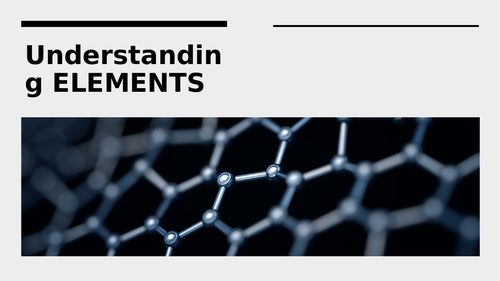

The resource focuses mainly on the IB Middle Years Programme (MYP) Chemistry. However, you can use it to teach GCSE Chemistry and beyond. It will provide a strong foundation for IBDP Chemistry and A-Level Chemistry.
It covers:
Understanding Elements
- Since ancient times people have wondered about how matter is made up and theories about the matter have evolved over time.
- The structure of an atom can be described by a Bohr type model involving a positively charged nucleus surrounded by negative electrons.
- Atoms are described by their atomic and mass numbers
- The patterns of reactivity in the Periodic Table can be explained using ideas about the arrangement of electrons.
Ions around us
- Understand how ionic compounds form
- Understand the formula of ionic compounds
- Explain the properties of ionic compounds
- Understand how to test for specific ions
Molecules and metals
- How covalent bonds are formed.
- How we explain the properties of simple covalent molecules and giant covalent structures.
- How metallic bonding can be used to explain the properties of metals.
- The properties of the alkanes
Designing materials
- The use of materials depends upon their properties.
- Smart materials can change their properties to suit changing conditions.
- Developments in nanotechnology are influencing and will continue to influence our lives in a significant way.
Particles on the move
- What is meant by the ‘rate’ of a chemical reaction?
- What are some factors that affect the rate of a chemical reaction?
- What can affect a chemical system at equilibrium?
Industrial Chemistry
- The idea of redox reactions and half equations
- How the idea of the reactivity series of metals can be used in chemistry
- How electricity can be used to produce chemical reactions
- How chemical energy can be used to produce electricity
- How various metals are extracted
Useful Organic Molecules
- How the reactions of alkenes are different from the reactions of the alkanes
- How polymers are formed
- The idea of green plastics or bioplastics
- The chemical aspects of biological molecules
- How alcohols react
Chemical Calculations
- Working out reacting masses of substances
- Working out formulae, percentage yields and atom economy
- Carrying out analysis using titration
- How gases react
- How new medicines are developed and tested
Heating Things: Endothermic and Exothermic Reactions
- Differentiate between endothermic and exothermic reactions
- Specific heat
- Using the heat of reactions in calculations
Something went wrong, please try again later.
This resource hasn't been reviewed yet
To ensure quality for our reviews, only customers who have downloaded this resource can review it
Report this resourceto let us know if it violates our terms and conditions.
Our customer service team will review your report and will be in touch.